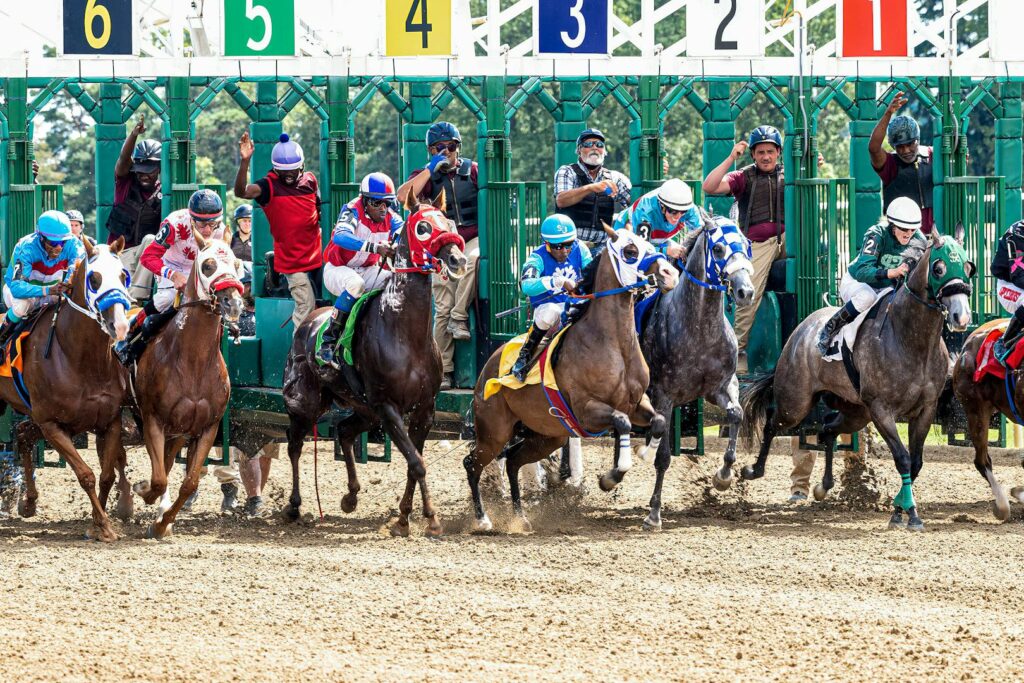With the arrival of spring, excitement for the Kentucky Derby begins to stir once again. This event, deeply entrenched in culture and history, has captivated millions with its pure equine grace and speed for years, hence called “The Most Exciting Two Minutes In Sports.”
Marking its 150th renewal this May 4, we’re set to observe a global array of elite thoroughbreds vying for victory once again. Below are some strategies to help you pick a contender who could likely etch its name into the annals of Derby history this year.
Look at the Horse’s Race History
Understanding a horse’s performance in past races is crucial. Like analyzing a student’s grades before a final exam, examining a horse’s racing history can provide insights into its potential success in the Derby. For example, horses that have excelled in races similar to the Kentucky Derby, in both distance and track conditions, often stand a better chance of performing well.
Racing forms, available at tracks or online, are rich with data, including finishing positions, times, and the conditions under which each race was run. A consistent track record of strong performances is a good indicator of a horse’s readiness and adaptability to the high stakes of the Derby.
Understand Betting Odds and Public Sentiment
Betting odds can tell you a lot about what other people think will happen in the race. These odds change based on how people bet. If many people bet on one horse, its odds of winning might get lower because it’s considered a favorite.
However, it’s also smart to think for yourself and not just follow others. Using online sportsbooks to study the top 2024 picks can be helpful. They give you all the latest on who’s favored to win and why, based on expert opinions and detailed information about each horse.
Besides real-time odds, such services offer expert commentary and detailed profiles of each horse, jockey, and trainer. This comprehensive approach allows bettors to weigh the odds against their research, making for a more nuanced betting strategy.
Check Out the Jockey and Trainer
The combination of a skilled jockey and an experienced trainer is crucial. For those who didn’t know, a jockey is a professional athlete who rides horses in competitive races. They’re responsible for guiding the horse around the race track and making strategic decisions during the race to maximize the horse’s performance and chances of winning.
They need to be skilled in horse handling, possess a deep understanding of racing strategies, and be physically fit to effectively manage the rigors of racing at high speeds. In other words, their ability to make strategic decisions in the heat of the moment can significantly impact a horse’s performance.

Similarly, a trainer’s expertise in physically and mentally preparing a horse for race day is indispensable. They don’t only tailor training programs that hone the horse’s speed, stamina, and racing tactics but also foster a strong, trusting relationship between the horse and its jockey, which is critical for success on race day.
Investigating a jockey and trainer’s track records can offer insights into their potential to navigate the Derby successfully. Look for pairs with a history of collaboration and success in major races, which can signal a winning synergy.
Furthermore, consider the jockey’s experience with the specific horse. A jockey who has built a rapport with their mount may be able to handle the pressures of the Derby better, guiding their horse through the pack with familiarity and confidence.
The Starting Spot Matters
The draw for starting positions is a critical moment in the pre-race preparations. While no position guarantees victory, historical data suggest that some posts have yielded more winners than others.
Analyzing the outcomes associated with each starting position can provide valuable insights into the potential impact on race day. For example, positions that offer a straighter path to the first turn or those that avoid the crush of horses vying for position can offer strategic advantages.
After the post positions are announced, re-evaluate your top picks in the context of their starting spots. Consider how each horse’s racing style might mesh with its position and whether its jockey has the skill to mitigate any disadvantages.
Watch the Horse’s Workouts
The days leading up to the Derby are filled with opportunities to observe the contenders during their workouts. These sessions can reveal much about a horse’s physical condition, energy levels, and readiness for the race.

Look for signs of agility, speed, and a strong connection with the jockey. A horse that moves effortlessly and responds well to the jockey’s commands during workouts may carry that poise into the Derby.
Additionally, pay attention to the horse’s demeanor post-workout. Signs of excessive fatigue or distress could be red flags, while calm, controlled energy levels post-exercise indicate a horse in peak condition.
Final Thoughts
Choosing the winning horse for the Kentucky Derby requires a blend of strategic research and intuitive observation. Remember, while no method guarantees success, informed choices increase your chances of celebrating Derby Day.


More Stories
Spin & Win: Your Guide to Playing Online Slots Like a Pro
AI’s Unseen Edge: Security Risks and Ethical Concerns in Gaming and Media
The Power of a Strong Start: Why Gaming Platforms Reward New Players So Generously